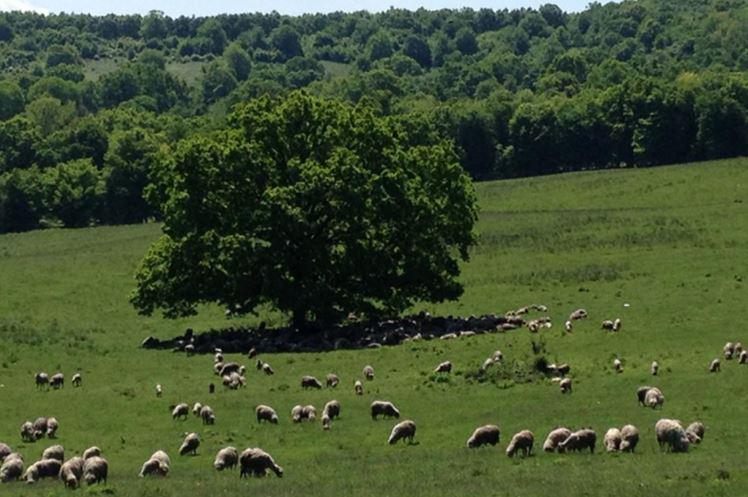17 November 2015
Wood Pastures and the Common Agricultural Policy

AGFORWARD researcher, Dr Tibi Hartel, played a key role in the “Europe’s Wood Pasture” Seminar held on 17 November at the European Parliament. The seminar, organised by the European Forum on Nature Conservation and Pastoralism, coincided with the release of the report: “Europe’s wood pastures: condemned to a Slow Death by the Common Agricultural Policy?”. The event attracted over 130 conservationists, scientists and policymakers from across Europe.
Wood pastures are considered as outstanding examples of Europe’s High Nature Value farmland. However the report highlights that interpretations of the Common Agricultural Policy (CAP) by the European Commission and at a national level can easily lead to a subsidy regime that discriminates against pastures with trees and shrubs, encouraging farmers to either remove the trees or to abandon the grazing.
The report argues that the laws in Spain provide all the necessary conditions for wood pastures to be eligible, but national and regional administrations, under pressure from EC auditors, tend to unnecessarily classify wood pastures as forest. The result is a far more restrictive system than under the pre-2014 CAP. Administrators in Sweden, on the other hand, have managed to move to a more flexible system, with pro-rata reductions in payments in proportion to the density of trees and shrubs. The thousands of hectares of wood pastures still excluded from direct payments (within Pillar 1) can receive agri-environment payments in Sweden.
Tibi explained that wood pastures in Romania, which generally have a density of less than 100 trees per hectare, can still be threatened by national interpretations of the CAP. The crowns of trees and patches of shrubs are excluded from the area eligible for direct payments and this can encourage farmers to cut down dead trees (living trees are protected) and remove shrubs.
In France, farmers were given guidance on how to claim pro-rata payments for different types of wood pasture. However in practice this has proved administratively complex. In England, the report says that the eligibility of wood pasture for payments is “quite pragmatic” and is based on whether farming “can be carried out in a similar way as on parcels without trees in the same area”. The report says that “there is no limit on the number of trees and no reduction in eligibility as long as there is clear farming use”.
The take-home message of the seminar was that while the CAP has the potential to sustain wood pastures, the national implementation of the rules (often with encouragement for a restrictive approach from EC auditors) results in unnecessary bureaucracy, administrative costs, and perverse incentives. The report recommends that the CAP rules on permanent pasture should not include criteria about the number of trees, but focus on whether the available forage is being effectively used.
Full details of the meeting can be found on the following web-page: arboriremarcabili.ro
Beaufoy, G., Blom, S., Hartel, T., Jones, G., Popa, R., Poux, X., Ruiz, J (2015). Europe’s wood pastures: condemned to a low death by the CAP? A test case for EU agriculture and biodiversity policy. European Forum on Nature Conservation.
Note that the views and opinions expressed above, as with all material on the AGFORWARD website, are purely those of the writers and may not in any circumstances be regarded as stating an official position of the European Commission.